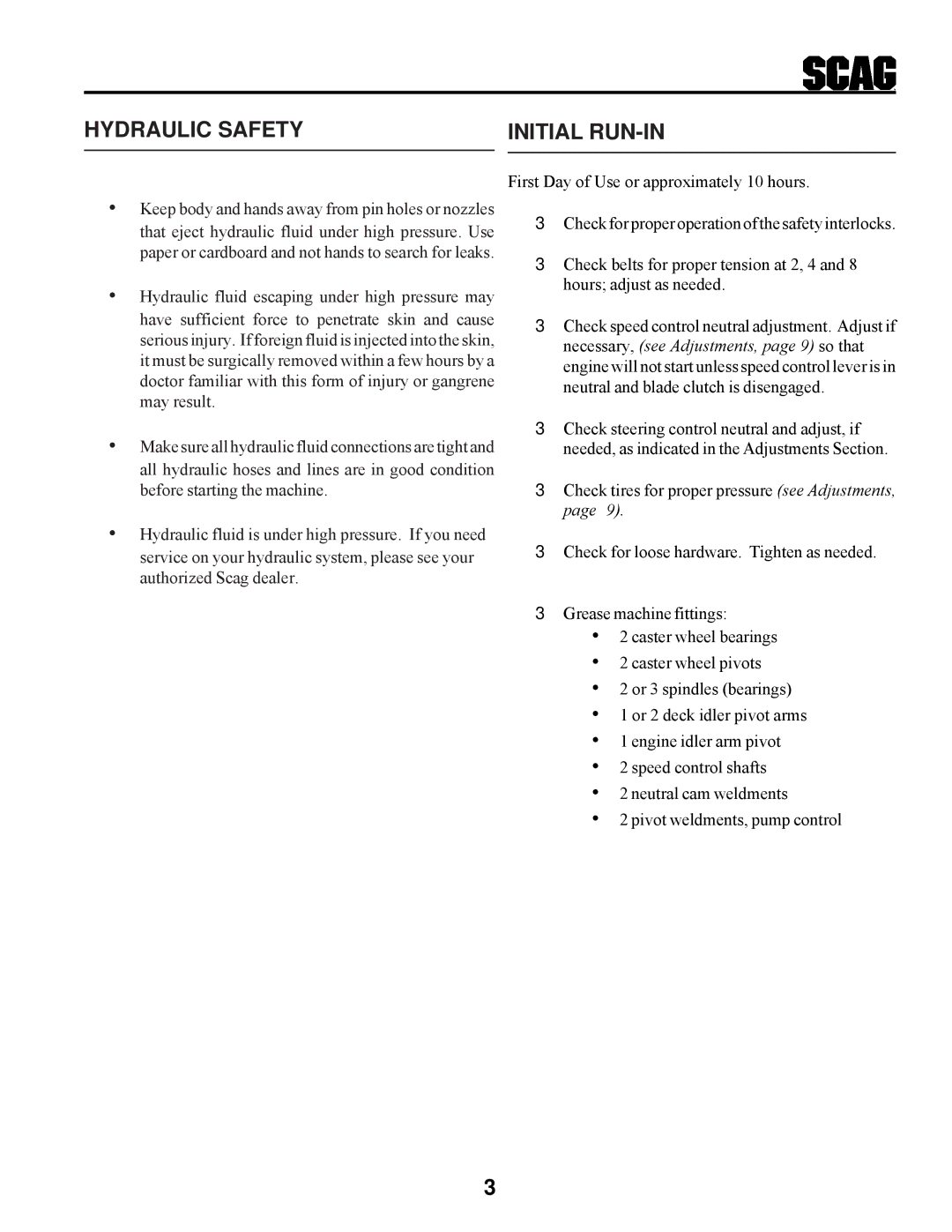HYDRAULIC SAFETY |
| INITIAL |
|
|
|
•
•
•
•
Keep body and hands away from pin holes or nozzles
that eject hydraulic fluid under high pressure. Use paper or cardboard and not hands to search for leaks.
Hydraulic fluid escaping under high pressure may
have sufficient force to penetrate skin and cause serious injury. If foreign fluid is injected into the skin, it must be surgically removed within a few hours by a doctor familiar with this form of injury or gangrene may result.
Make sure all hydraulic fluid connections are tight and
all hydraulic hoses and lines are in good condition before starting the machine.
Hydraulic fluid is under high pressure. If you need
service on your hydraulic system, please see your authorized Scag dealer.
First Day of Use or approximately 10 hours.
3Check for proper operation of the safety interlocks.
3Check belts for proper tension at 2, 4 and 8 hours; adjust as needed.
3Check speed control neutral adjustment. Adjust if necessary, (see Adjustments, page 9) so that engine will not start unless speed control lever is in neutral and blade clutch is disengaged.
3Check steering control neutral and adjust, if needed, as indicated in the Adjustments Section.
3Check tires for proper pressure (see Adjustments, page 9).
3Check for loose hardware. Tighten as needed.
3Grease machine fittings:
•2 caster wheel bearings
•2 caster wheel pivots
•2 or 3 spindles (bearings)
•1 or 2 deck idler pivot arms
•1 engine idler arm pivot
•2 speed control shafts
•2 neutral cam weldments
•2 pivot weldments, pump control
3
